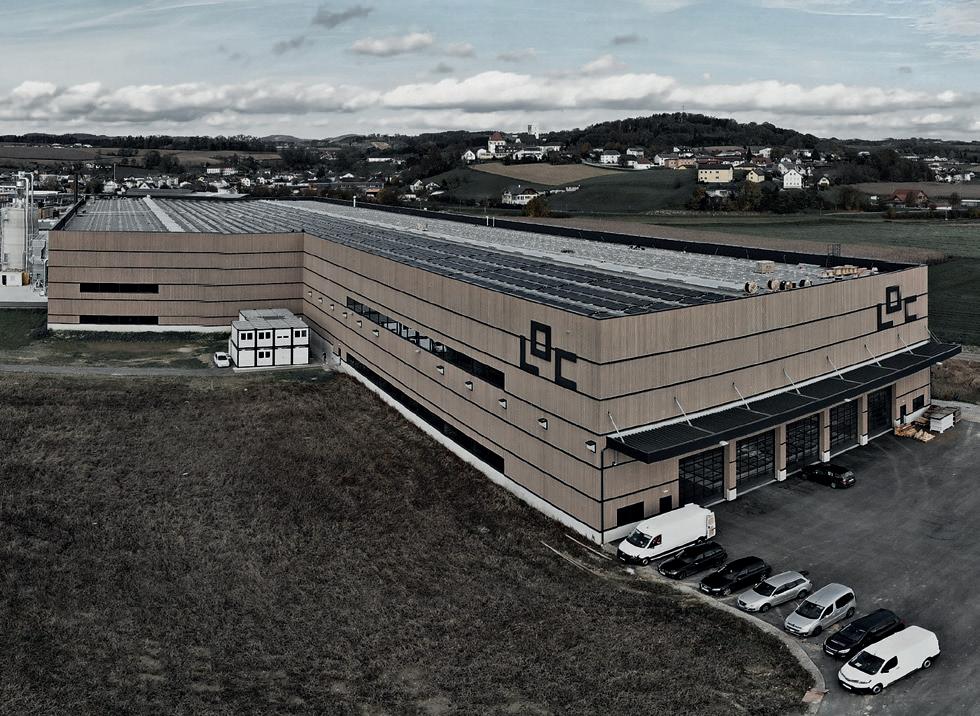
2 minute read
A new plant for big plans: LOC Holz cross laminated timber production
cross laminated timber in Europe
"There is no plan B," Per Jensen, area sales manager at System TM, quotes LOC Holz operations manager, Dietmar Ruml. Despite many challenges due to the COVID-19 pandemic, that the System TM team had to face in the period leading up to the commissioning on site, the first CLT board rolled off the production line at the newly established cross laminated timber plant right on schedule. Per Jensen recalls: "Five days before the deadline, I got a photo of the first panel produced, which was a great success for everyone involved! We're delighted that our team was able to deliver on time as usual and despite the demanding conditions."
LOC Holz GmbH: Pristine, aesthetic and genuine
The idea for the LOC Holz plant, located in Arbing, which lies in the Mühlviertel region of Upper Austria, was conceived by sawmill owners Josef Lauss and Rudolf Ortner, as well as Jan-Walter Cappelen, of the Cappelen Group. Together, they built a cross laminated timber plant with the mission of making building with wood more sustainable through aesthetic timber construction systems, while ensuring the highest quality in production. Sustainability and regionality are considered as the guiding principles in the corporate philosophy of the young company and are reflected in the entire production process chain. In this respect, the plant can alternately produce both panels and beams for solid wood construction. The production volume is expected to be up to 75,000 m³/ year in the future and create around 100 jobs in the region in the medium term.
Quality, flexibility and a tailor-made solution
The requirement of ‘quality before quantity’ of LOC Holz perfectly matches the profile of System TM. With over 45 years of experience in the solid wood industry, we were also able to play to our strengths in this particular project in the field of structural timber production. Together with our HOMAG partner Kallesoe Machinery, we supplied a tailor-made cross laminated timber line that leaves no stone unturned.
At the beginning of the line is an optimization cross-cut system in which complete packages are placed on a roller conveyor and automatically conveyed onwards. An OptiFeed 6000 Vack unstacks the fed packages layer by layer. The dryer slats are then automatically pushed out and collected in a pallet for reuse. The separated boards are checked for moisture content, curvature, and strength in a throughput process; defective lamellas are automatically sorted out. Prior to planing, the lamellas can be automatically turned if necessary. A MiCROTEC GE706 scanner ensures that the boards are cut to the optimum length in the Opti-Kap 5103 saw. The Opti-Kap line is followed in the production process by two different fingerjointing lines, one for short and one for long lengths.

Making optimum use of resources
The wood used by LOC comes from the sawmills of Lauss and Ortner, is carefully dried, qualitatively sorted and processed by cross-cutting and finger-jointing to a pristine quality with a knot free, clean appearance, plain and simple. In order to make the best possible use of the valuable resource wood, a finger-jointing line was designed for the customer, which enables the short lengths produced in the cross-cut system to be further processed. These lamellas are subsequently glued to form a panel. With the horizontal short-length fingerjointing line type Opti-Joint H-200, System TM was able to offer a tailor-made infeed solution. The workpieces are fed to the line via a spin feeder and individually aligned. Depending on the marking, they are either transported further or automatically turned for optimization. Subsequently, the finger profile is created and finger-jointing is prepared (glue application, control and prealignment). After the workpieces have been glued in the press, a multi saw divides the finished workpieces into two lengths before they are automatically stacked for collection. The lamellas obtained are used - for example - for the middle layers in the subsequent CLT press line.
Unique aesthetics and simple beauty
Another important feature of the LOC plant is the horizontal finger-jointing of the long lamellas used in the outer layers of the





